EALC 250: Midterm Terms
1/59
There's no tags or description
Looks like no tags are added yet.
Name | Mastery | Learn | Test | Matching | Spaced |
|---|
No study sessions yet.
60 Terms
Jōmon period
Cord-patterned pottery, lasted roughly from 10,500 to 300 BCE.
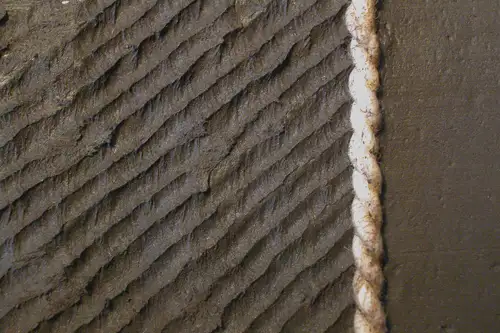
Dogū (clay figurine)
Clay figurines made in the Jōmon period
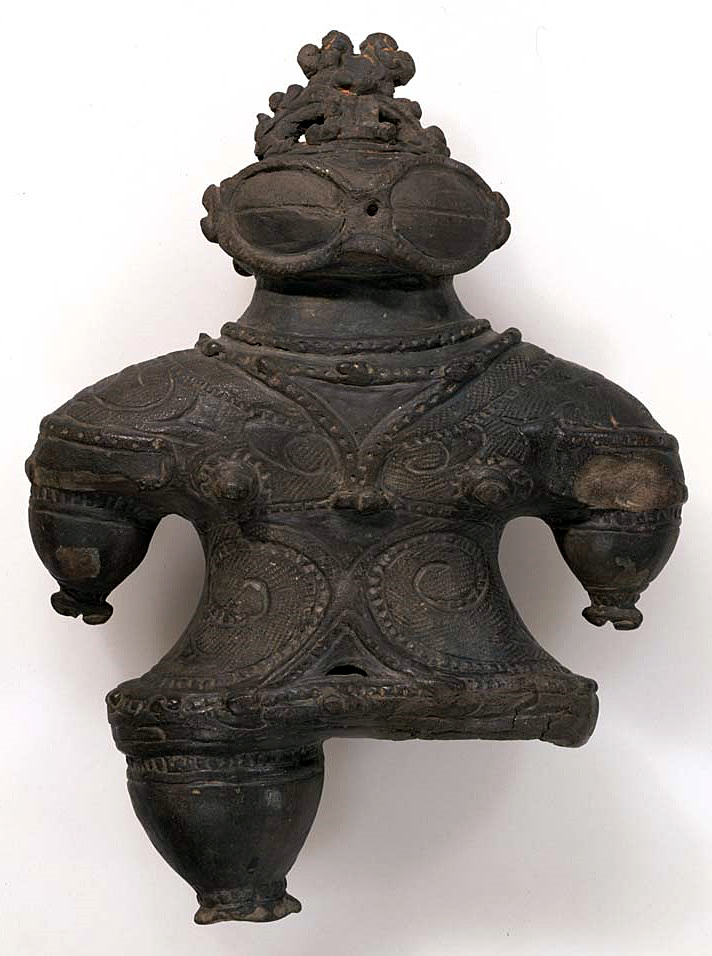
Kofun period
Circa mid 3rd century to late 7th century
Monumental mounded tombs (kofun 古墳: old mounds; tumuli; old tombs)
• Emergence of elite class
• Gradual centralization of authority
• Construction of mounded tombs required
• A tremendous amount of labor
• A large amount of resources
• A careful planning
• Advanced technology, engineering, and religious beliefs
• Sophisticated ritual system
• Many precious burial goods - only available for the elite
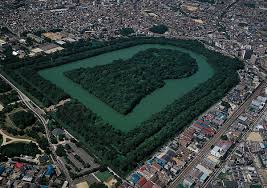
Daisen Kofun
Daisen Tomb 大仙古墳 (a.k.a. Emperor Nintoku's tomb)(mid-5th c), Sakai city, Osaka prefecture
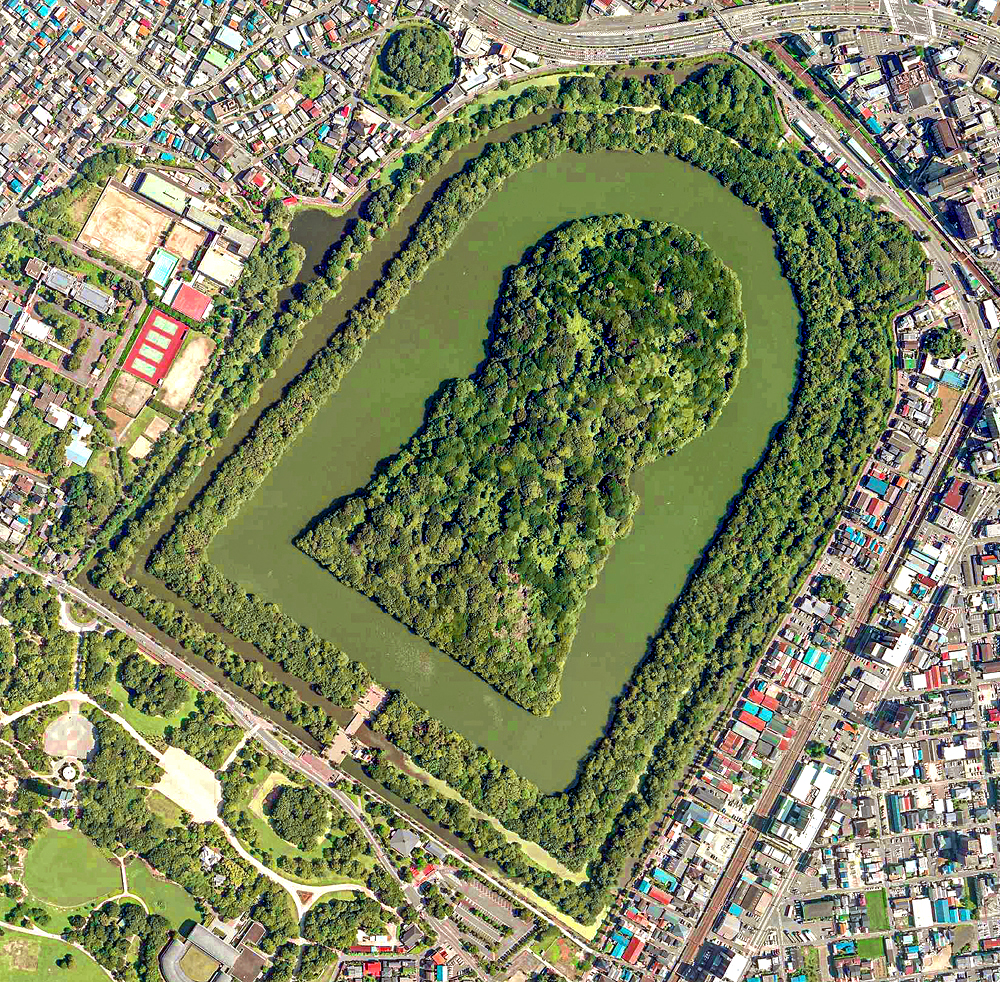
Haniwa
Hollow cylinders of baked clay
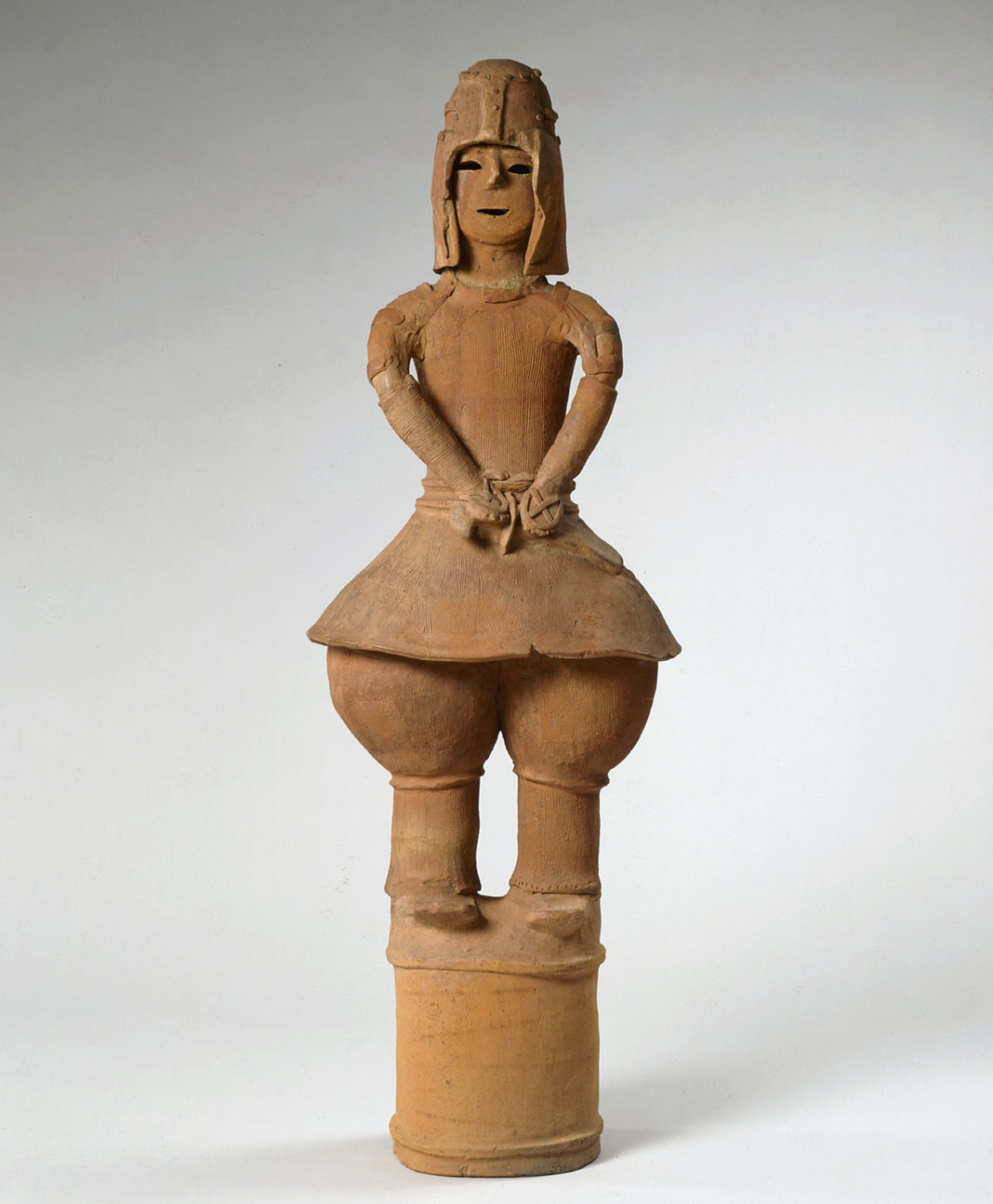
Queen Himiko
The queen of a kingdom known as Yamatai, which ruled over a federation of other kingdoms spread over a wide region during the third century C.E
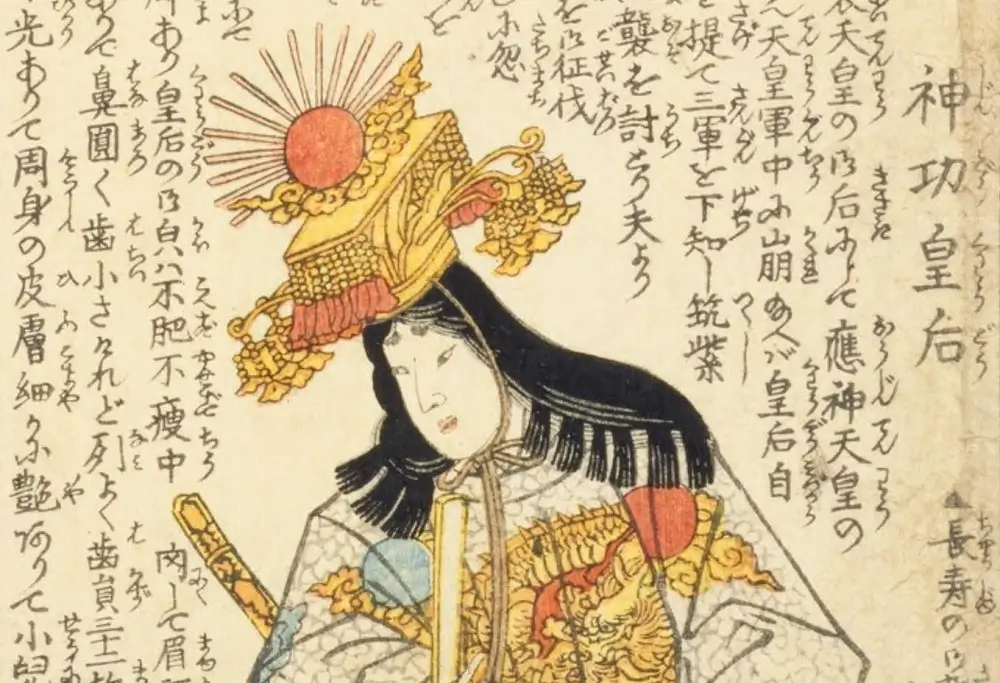
Shinto
Lit. "the way of kami"
• Japanese "indigenous" belief system
• Kami worship
• Was not an independent religion b/f the late 19th c
• Buddhist influence (teaching, institution, writing, visual art, building, etc.)
• B/w 1868 (Meiji Restoration) and 1945 (the end of WWII), the imperial government refashioned Shinto
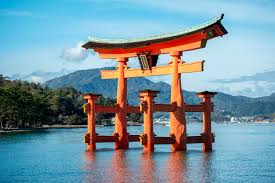
Kami
• Spirits of natural phenomena
• Gods or deities
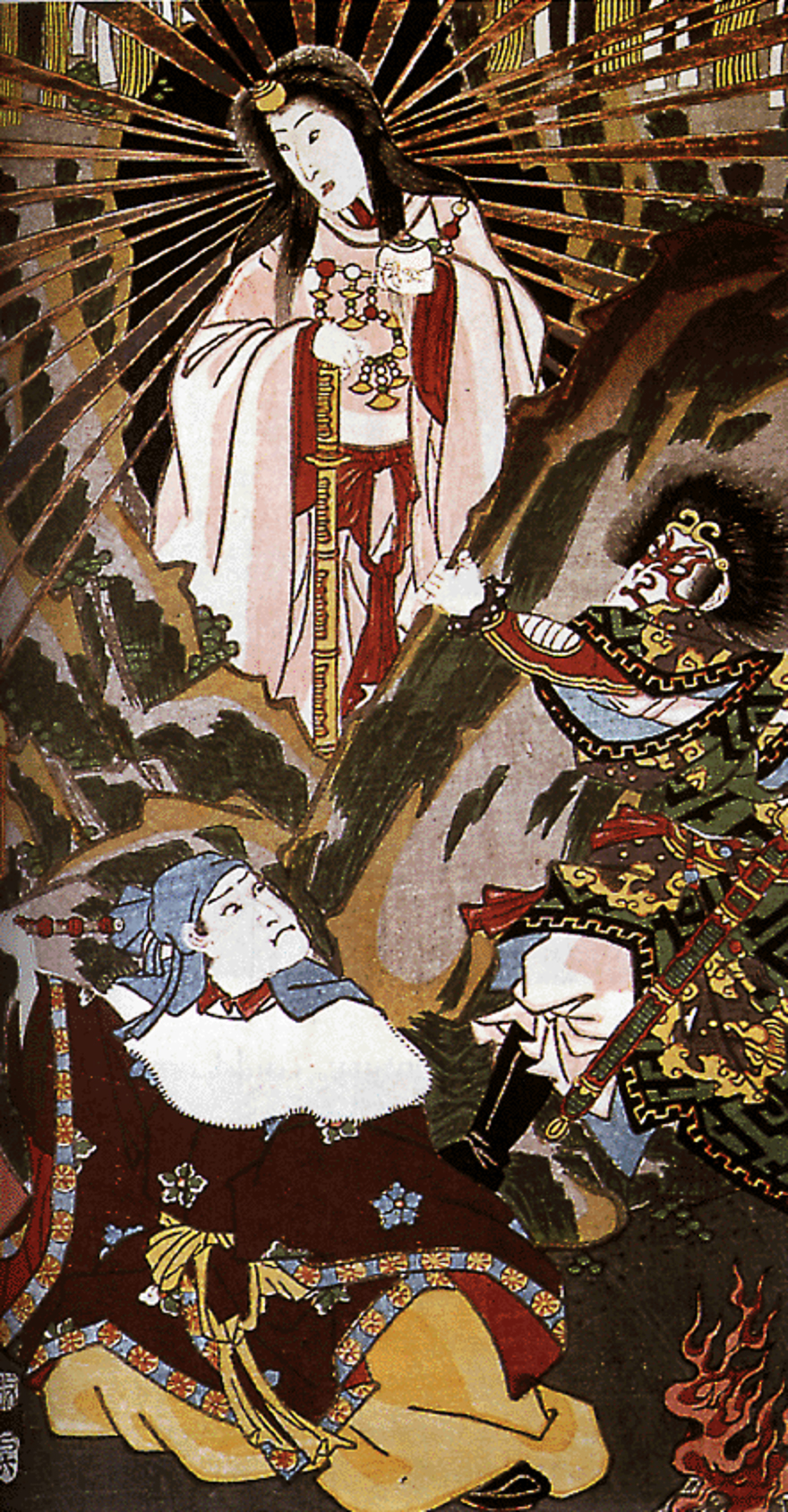
Torii
A gatelike structure that marks a Shinto sacred place.
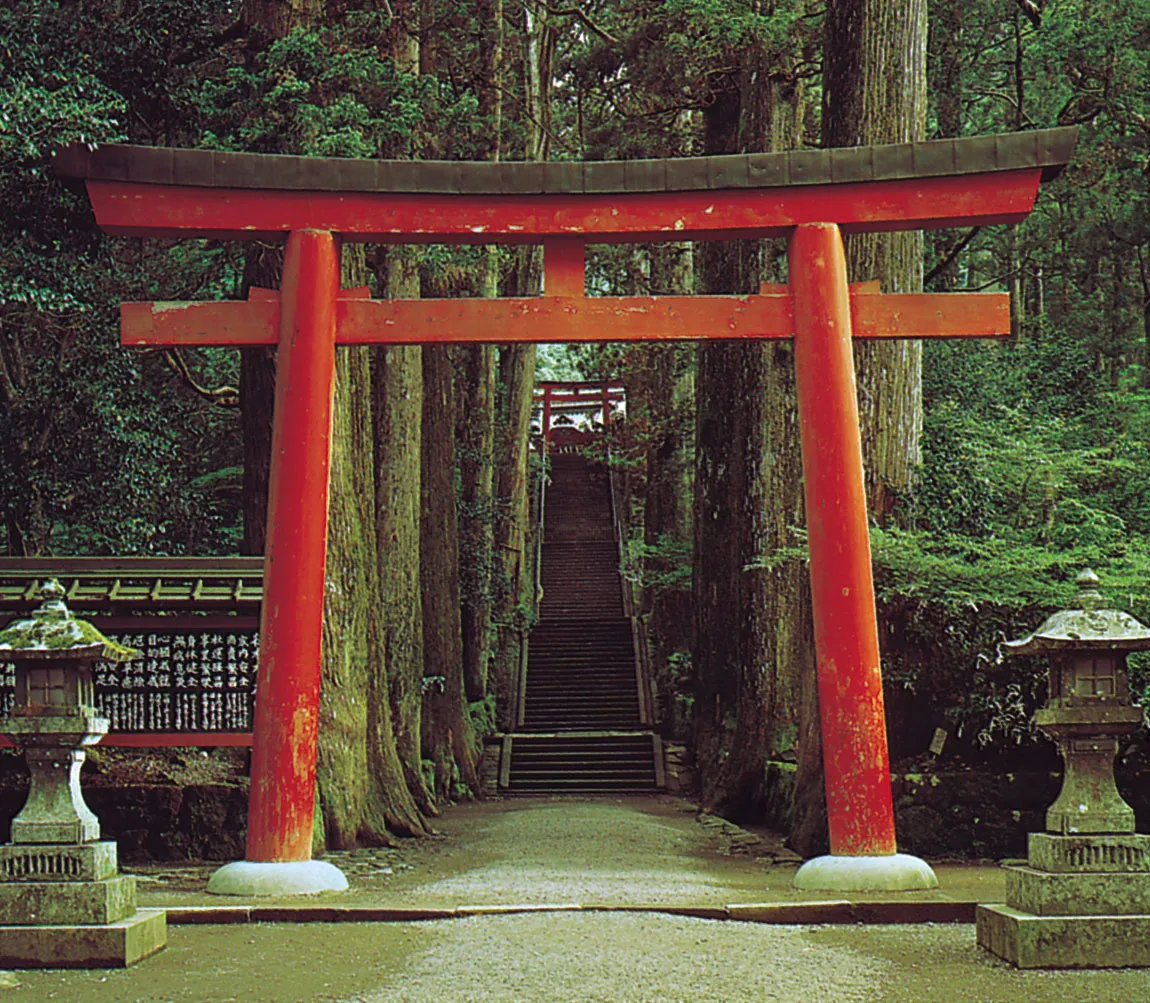
Ise Shrine
• Shinto shrine
• Mie prefecture (about 70 miles to the southeast of Kyoto) - a place which is bathed in bright sunshine even in winter
• Dedicated to Amaterasu, the Sun goddess, the ancestor of the imperial family
• Established in the 1, 5, 6th c??
• First constructed in the 6th c
.• Inner shrine and outer shrine
• 125 small shrines
• Preserves the prototype of Shinto buildings
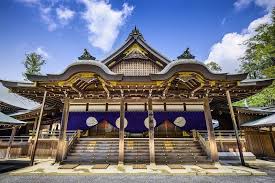
Amaterasu
Sun goddess and ancestor of the Japanese imperial family (who claims direct decent from Amaterasu)
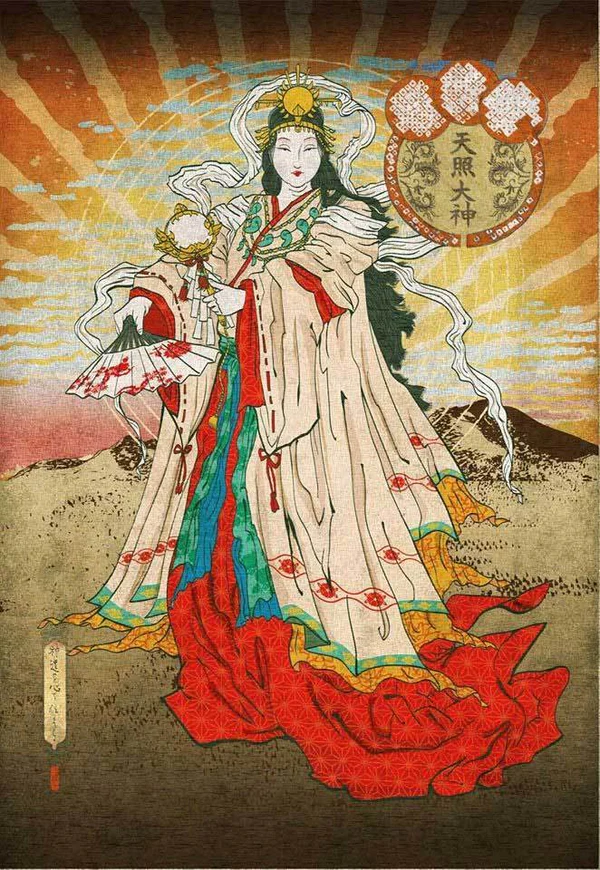
Three Imperial Regalia
sword
• curved jewel (or seal)
• mirror
― symbols of the divine authority of the emperor
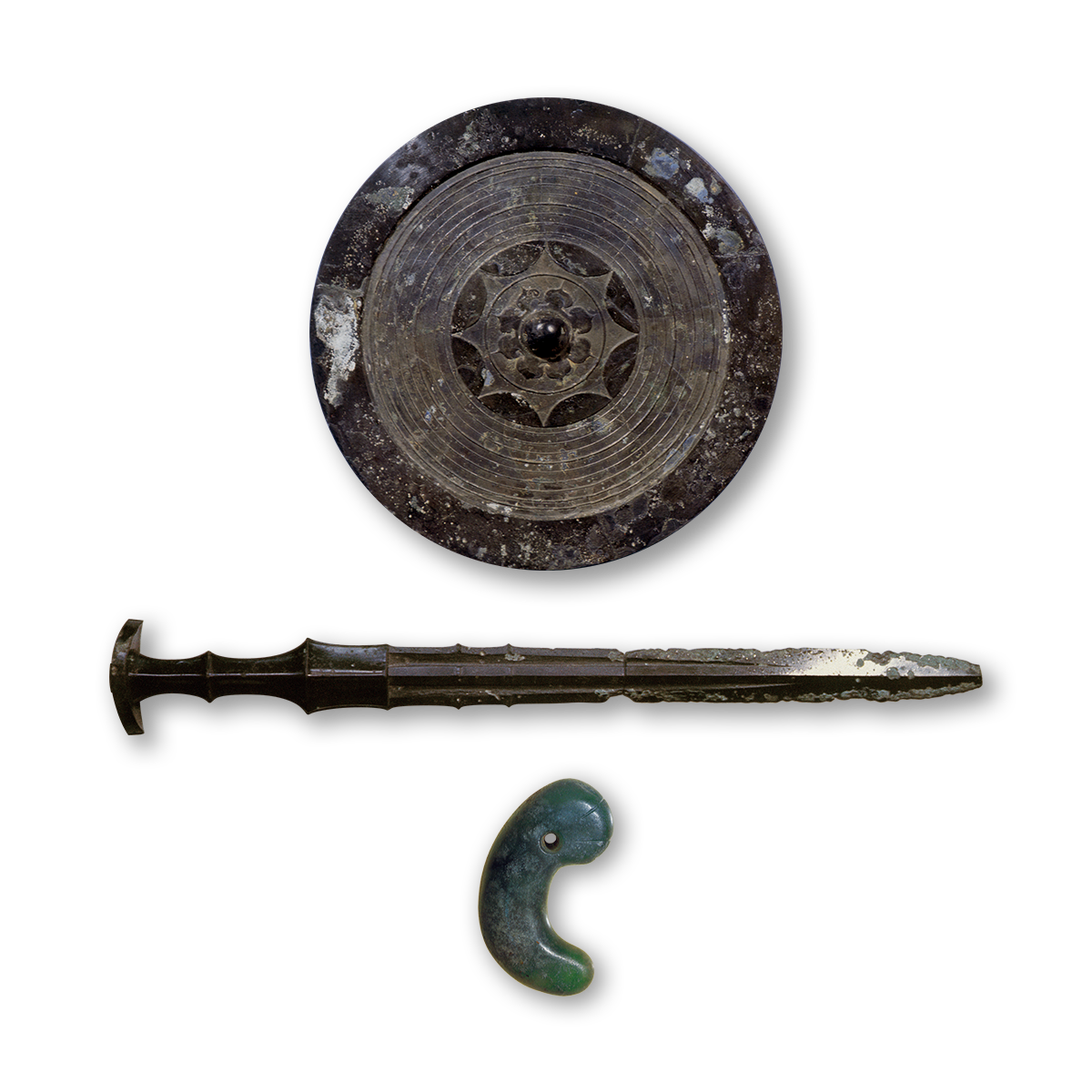
Buddhism
A religion based on the teachings of the Buddha. Was introduced to Japan via Korea in the 6th c.
• Was supported by Empress Suiko (r. 592-628) and her nephew Prince Shōtoku.
Siddhartha Gautama
Siddhartha Gautama (c. 563-483 BCE)
• Northern India (Nepal)
• Prince of the clan named Sakya
• Sakyamuni (Sage of the Sakyas)
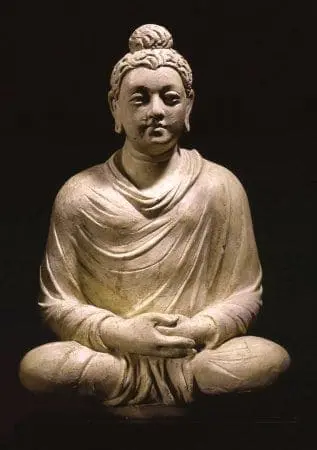
Sakyamuni
Buddhism is Sudasa Gautama, or Gautama, who lived in Northern India around 5th century BCE, and he was born into an aristocratic family. So he was a king. And he had so many names, but he is often called Shakyamuni, which literally means sage of the Shaka clan.
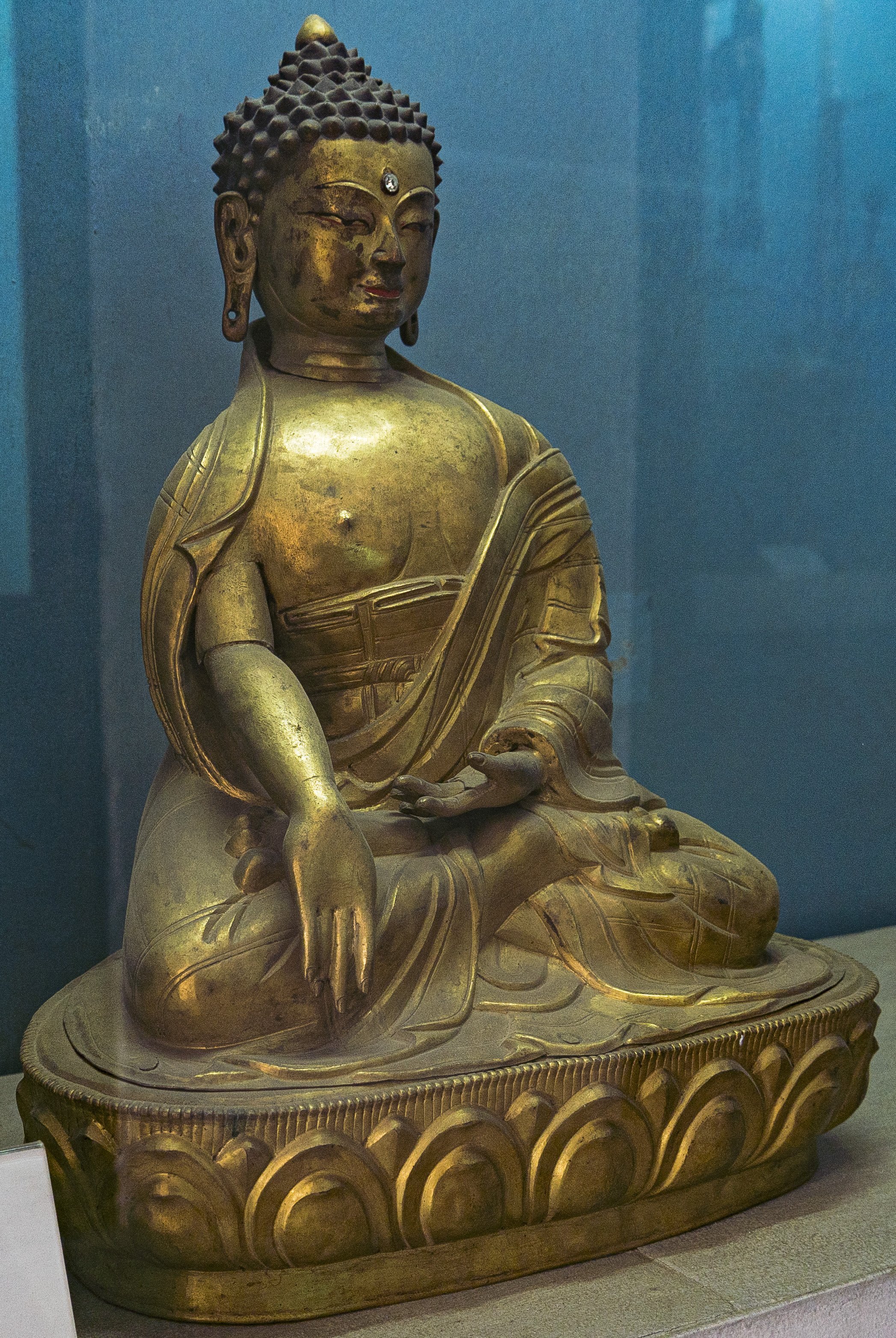
Buddha
Buddha means enlightened one.
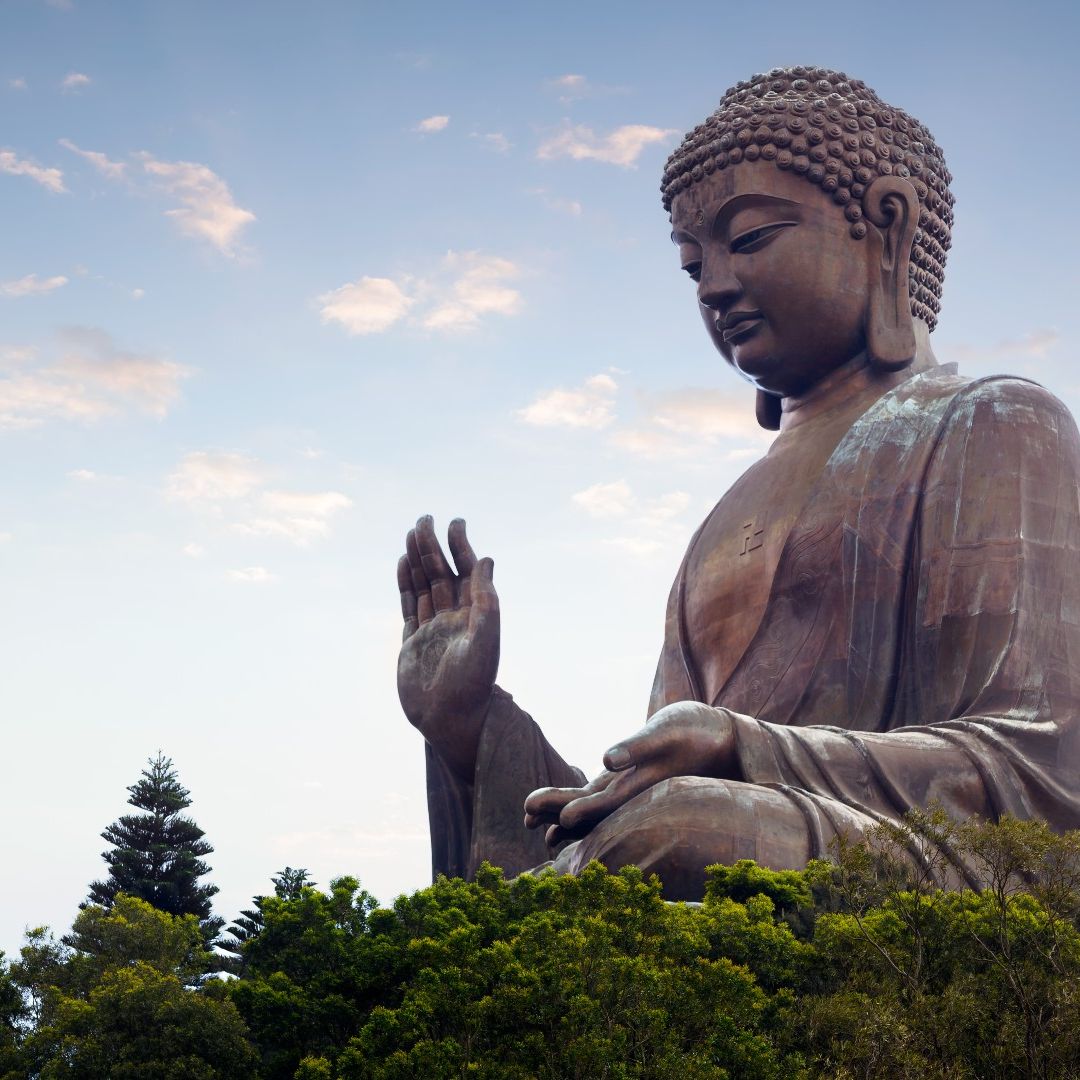
Bodhisattva
A person who has attained enlightenment but who has postponed nirvana in order to help others achieve enlightenment on Earth
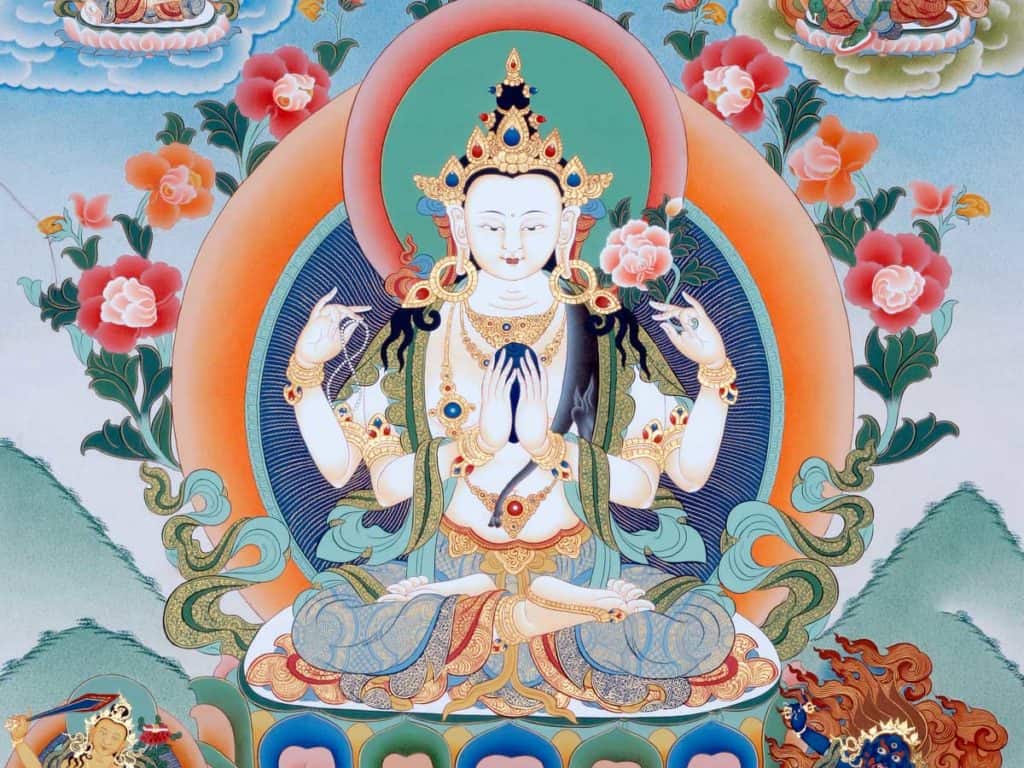
Four Passing Sights
• Old age
• Sickness
• Death
• Poverty
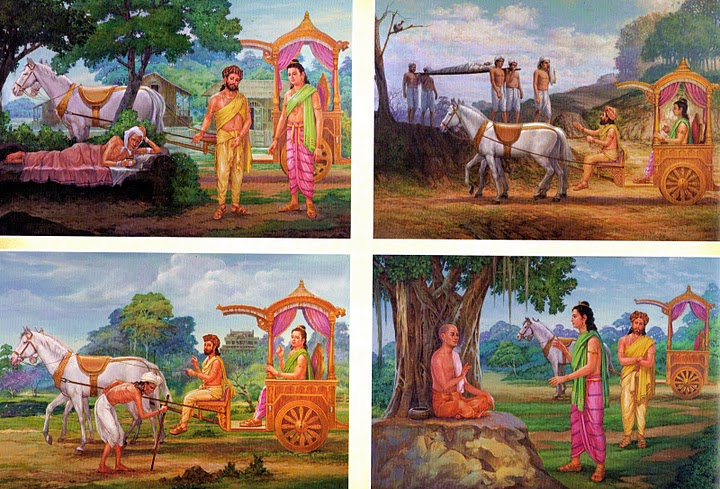
Four Noble Truths
• All life is suffering
• Desire is the cause of suffering
• We can eliminate desire
• To eliminate desire is to follow the Eightfold Path
Six Realms of Transmigration
1. Realm of celestials
2. Realm of human beings
3. Realm of raging spirits
4. Realm of animals
5. Realm of hungry ghosts
6. Realm of hells
Karma
Deeds or actions in this life
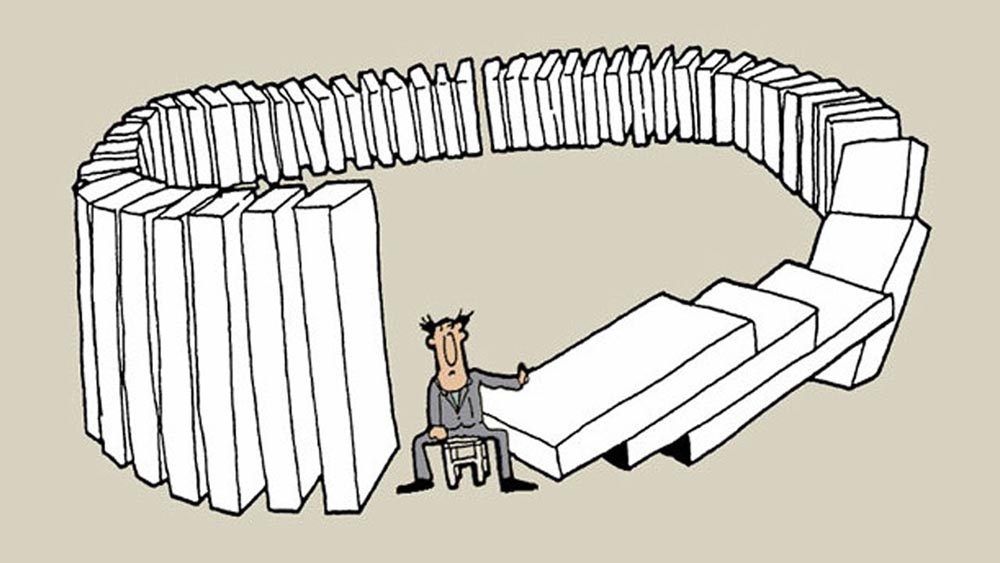
Hōryūji
• Located in Nara prefecture.
• Established in the 7th c. (607)
• Fire destroyed it (670)
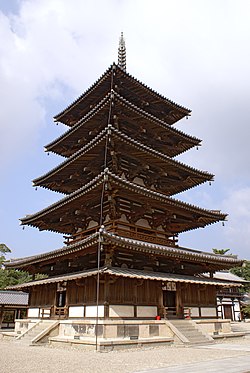
Prince Shōtoku (574-622)
Shōtoku taishi 聖徳太子 (lit. Prince of Holy Virtue) ―honorific appellation
• Imperial prince
• Regent of his aunt, Empress Suiko
• Promulgated:
• The twelve Chinese-style court ranks (冠位十二階)
• The Seventeen-Article Constitution (十七条憲法)
• Contributed to the spread of Buddhism
• Established several Buddhist temples
• Protector of Buddhism
• Considered an ideal leader both in political and spiritual realms
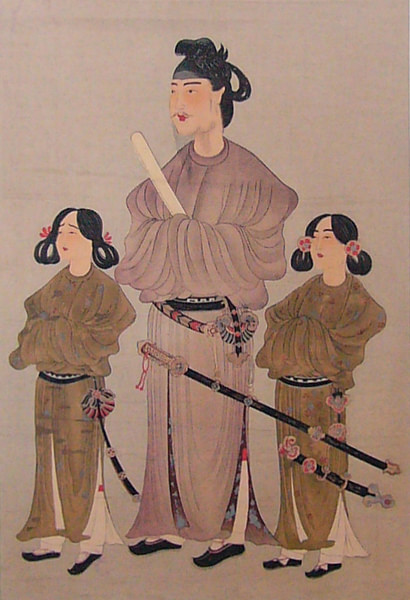
Golden Hall (Main Hall)
A copper temple
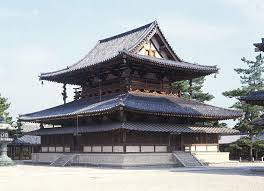
Shaka triad
A statue in the Golden Hall (Main Hall)
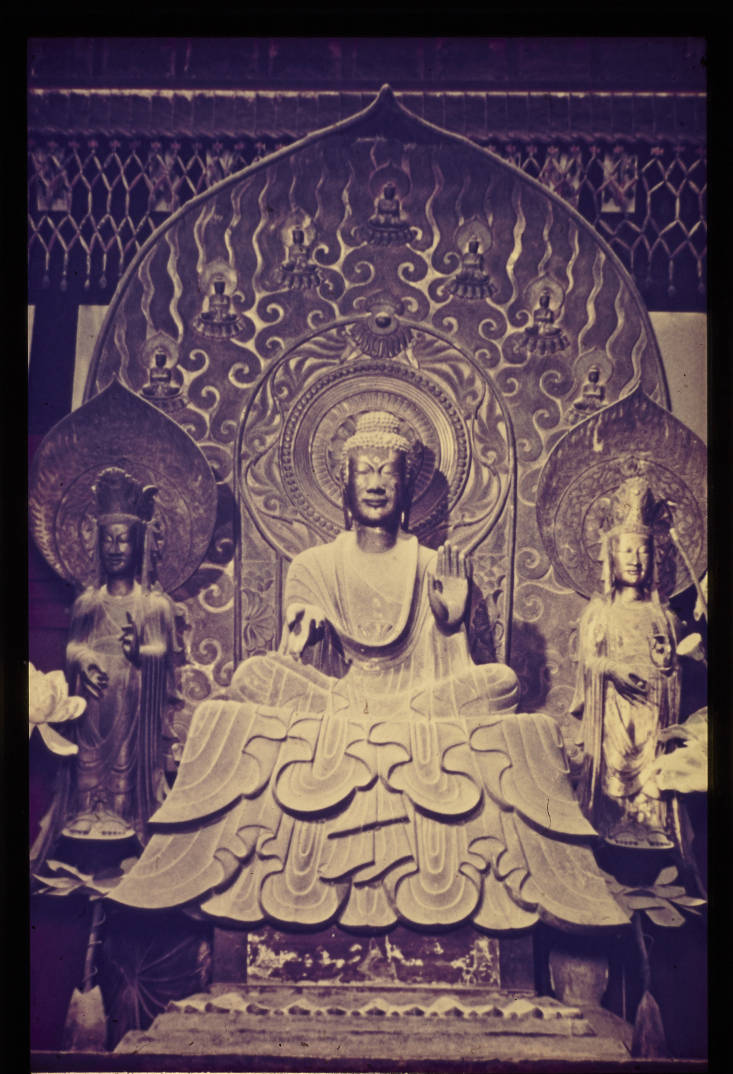
Five-storied pagoda
Pagoda is an original stupa, a barrier mound for ashes or relics of the Buddha or his disciples are in India when the historical Buddha died, he was cremated, and his body, the aspect, arches and relics were divided into eight portions.
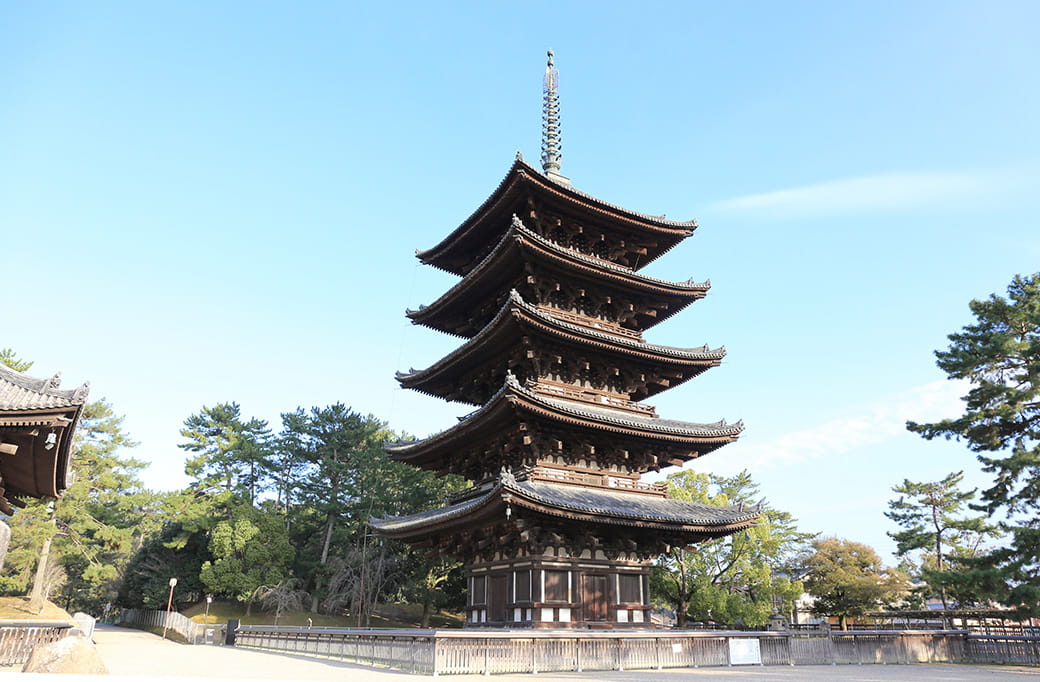
Stupa
A dome shaped structure as a Buddist shrine
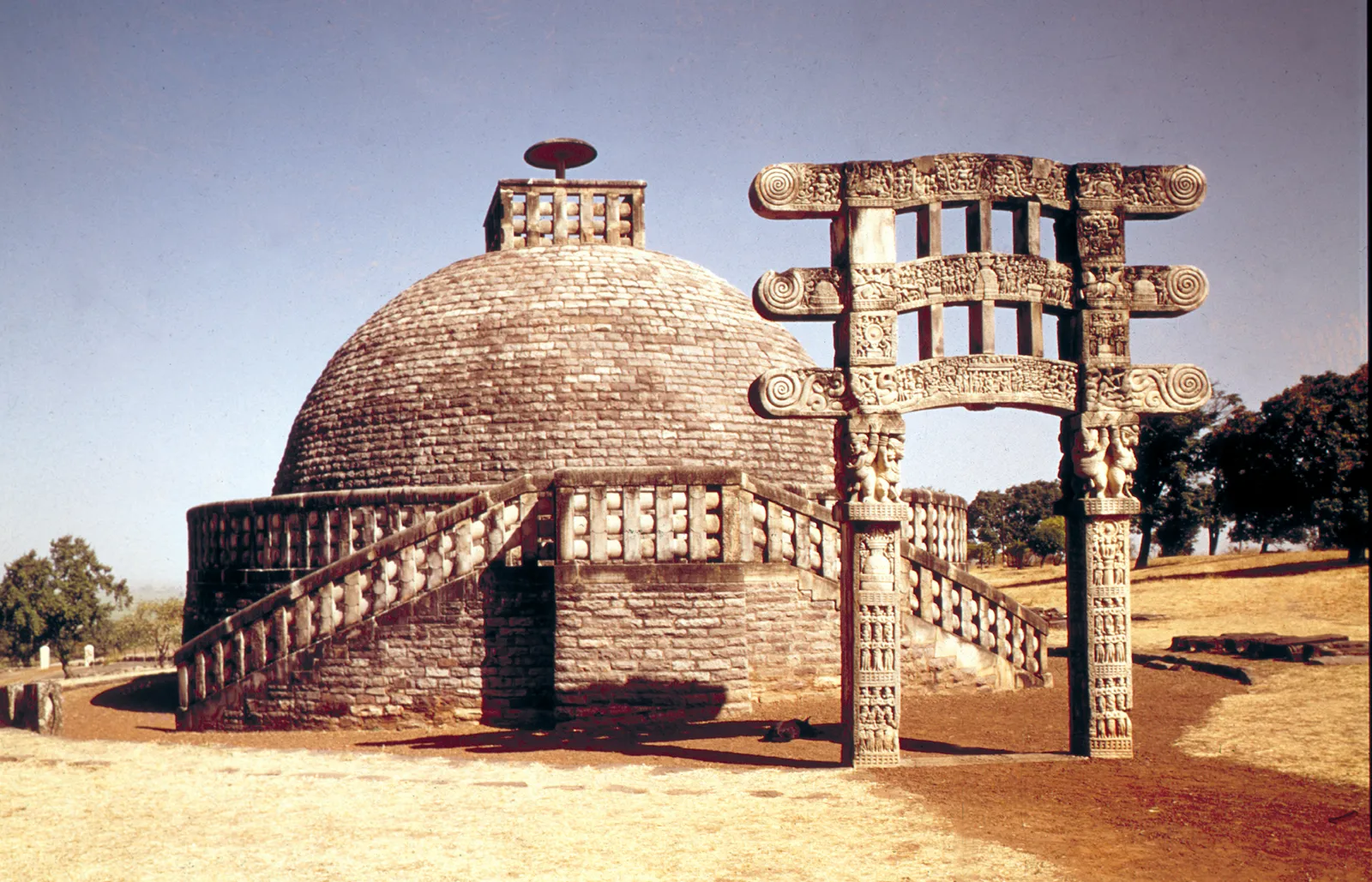
Death of Sakyamuni sculpture
Budda statue that depicts him reclining posture posture, showing that he has attained the final form of liberation.
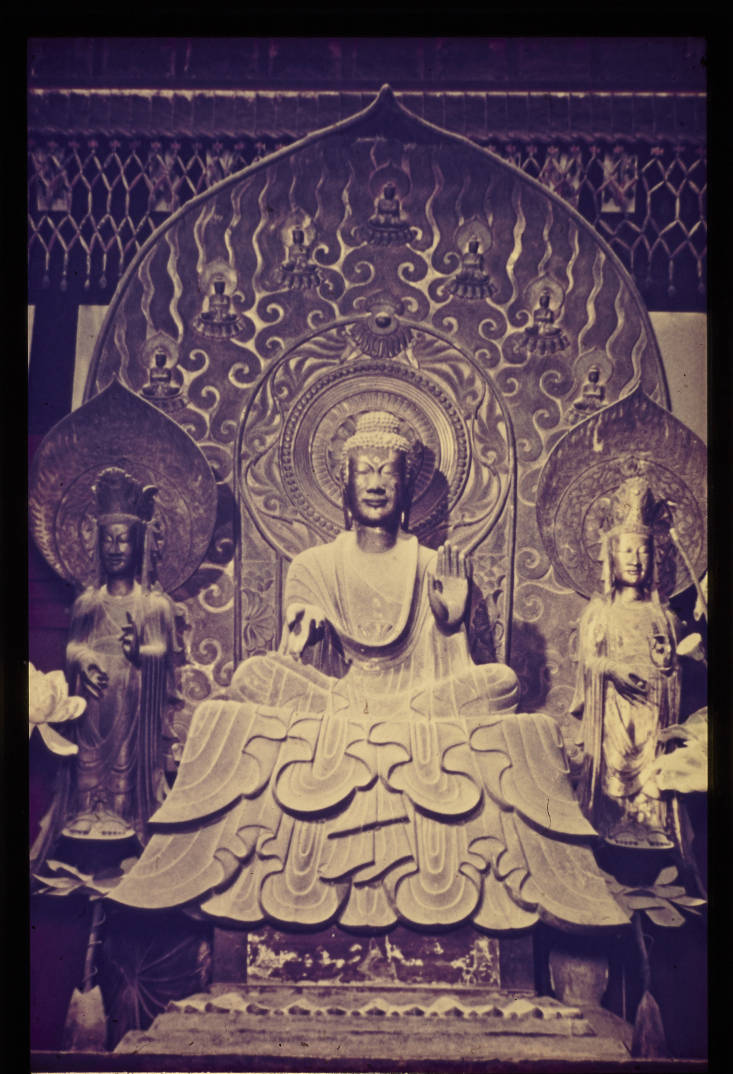
Dream Hall (Yumedono)
Buddhist temple in Hōryū-ji
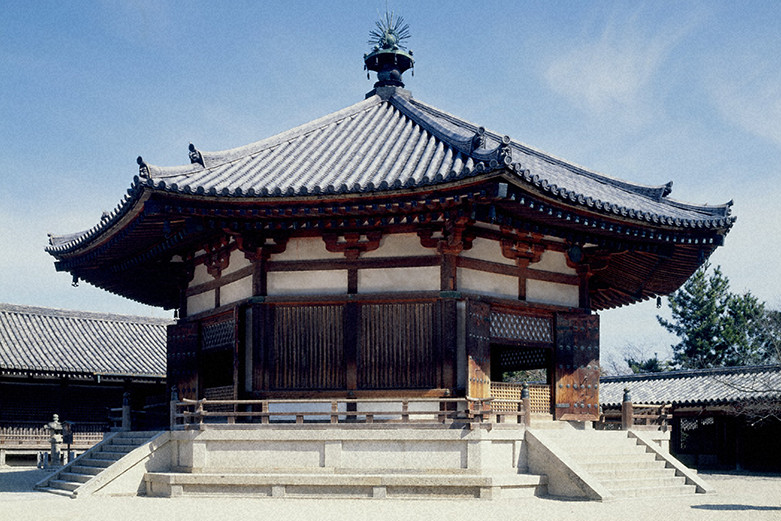
World-Saving bodhisattva
An enlightened individual who chose to postpone their own final nirvana and help others achieve awakening.
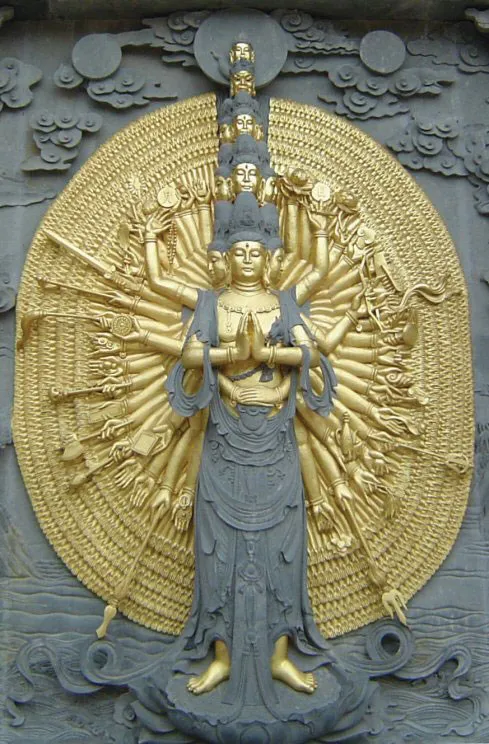
Ernest Fenollosa
American art historian of Japanese art, professor of philosophy and political economy at Tokyo Imperial University.
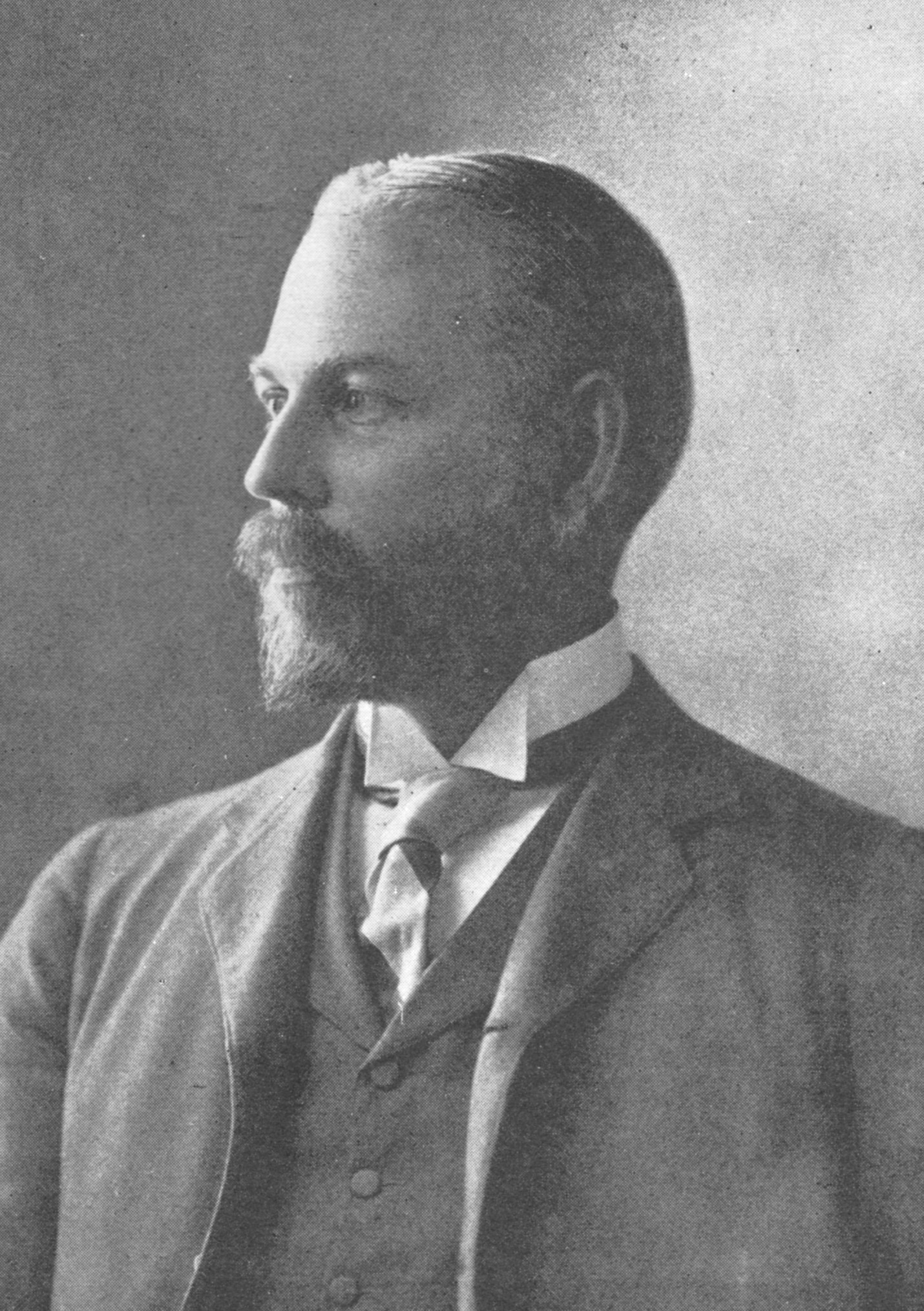
Okakura Tenshin
A Japanese scholar and art critic who in the era of Meiji Restoration reform promoted a critical appreciation of traditional forms, customs and beliefs
Nara period
A period of Japanese history, 710-794, characterized by the adoption of Chinese culture and forms of government
Heijō (Nara) Capital
Heijō Palace was the imperial residence in the Japanese capital city Heijō-kyō, during most of the Nara period.
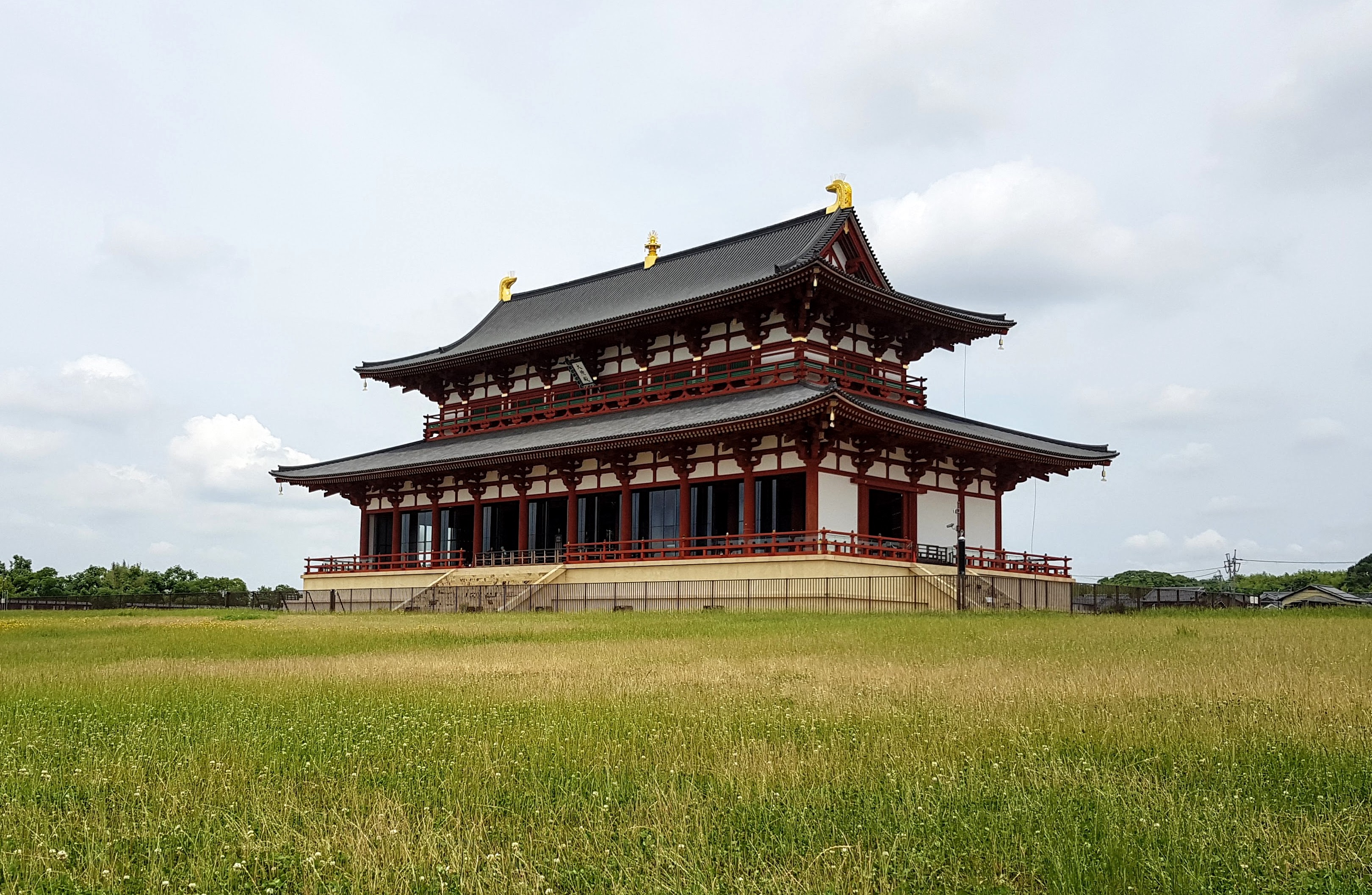
Chang'an
Former name of the city Xi'an in Shaanxi Province, China, used when it served as the capital city of several Chinese dynasties from 202 BC to AD 907.
Great Hall of State (Daigokuden)
A state building where important national ceremonies took place.
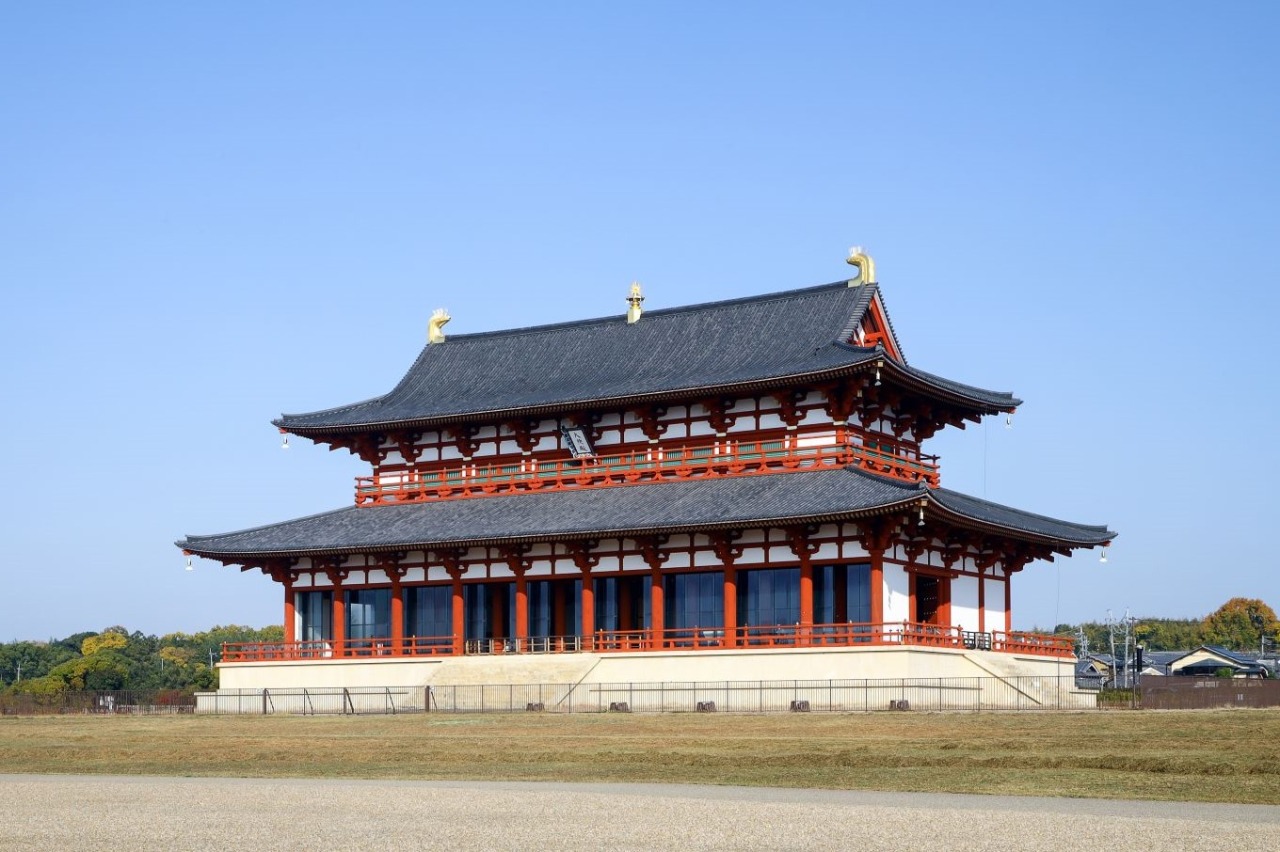
Tōdaiji
A Buddhist temple complex that was once one of the powerful Seven Great Temples, located in the city of Nara, Japan
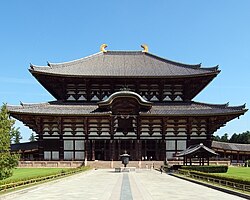
Emperor Shōmu
Devoted huge sums of money to the creation of magnificent Buddhist temples and artifacts throughout the realm; during his reign Buddhism virtually became the official state religion.
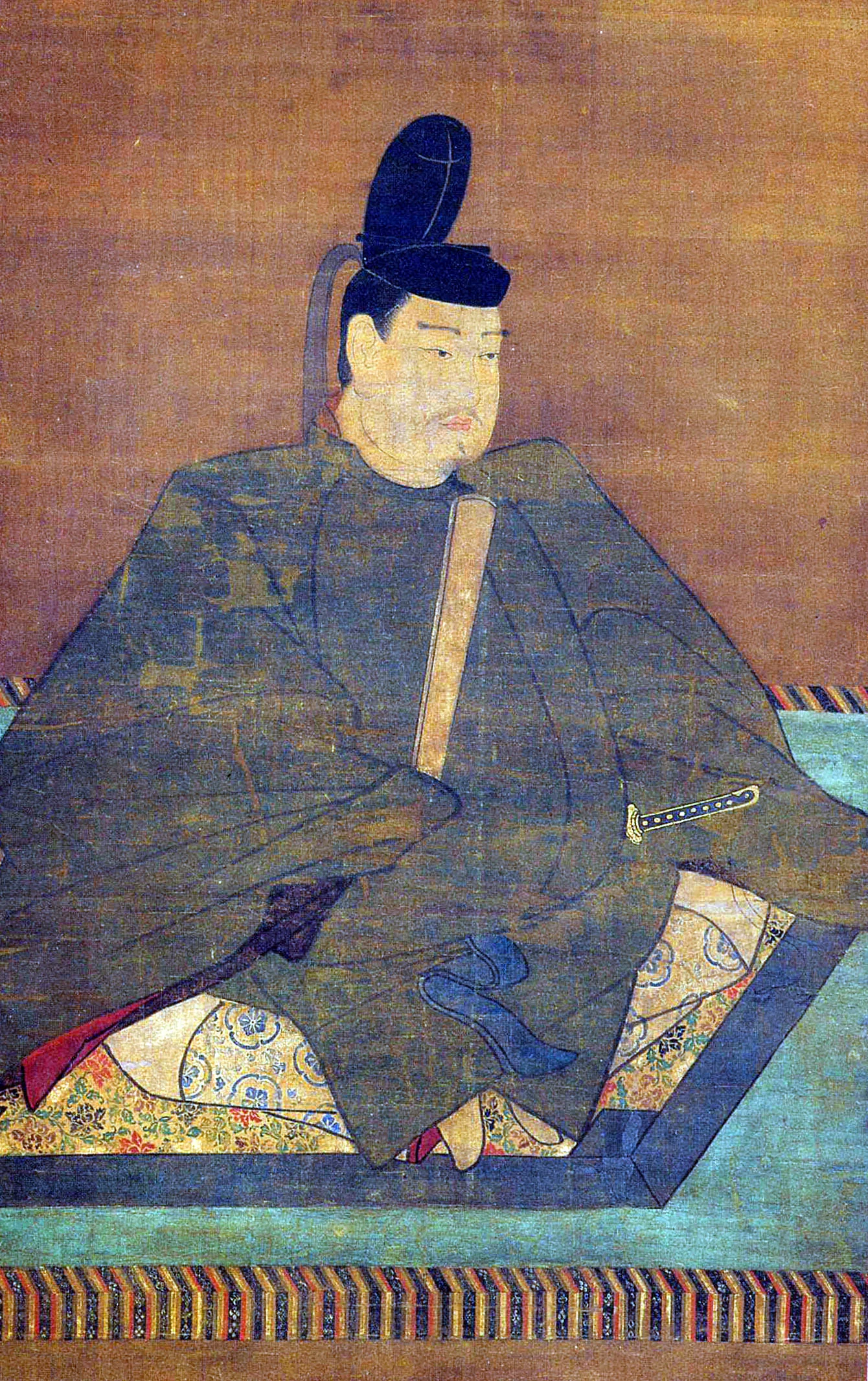
Main Hall (of Tōdaiji)
Is the world's largest wooden building, housing one of Japan's largest bronze Buddha statues, the Daibutsu.
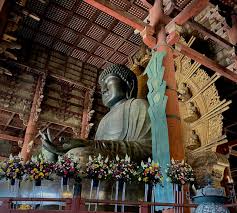
Great South Gate
Main gate of Tōdai-ji made during the Nara period.
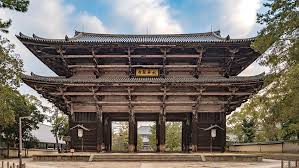
Guardian deities at the Great South Gate
The guardian deities at the Great South Gate of Tōdai-ji Temple in Nara, Japan, are the Niō (also known as Kongo Rikishi), two fierce guardian kings made of wood. They consist of Agyō, with an open mouth, and Ungyō, with a closed mouth.
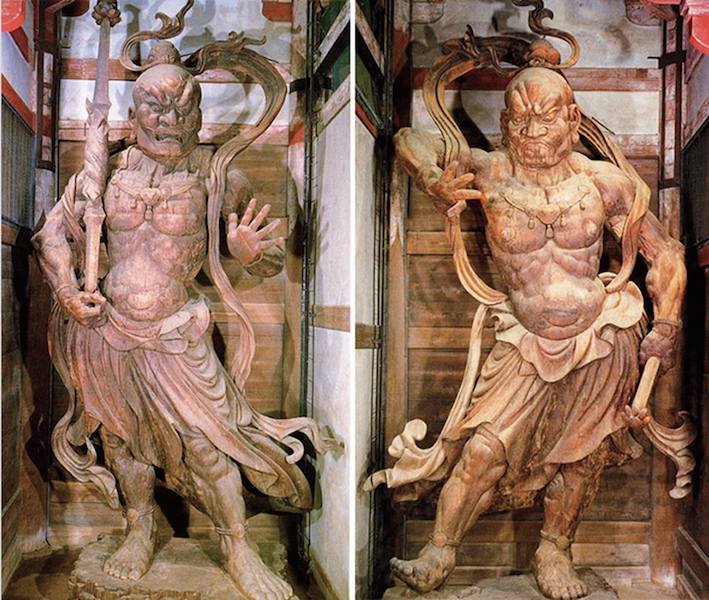
Joint-block technique
A method of creating wooden sculptures and structures by piecing together multiple carved wood blocks and panels, rather than carving from a single block
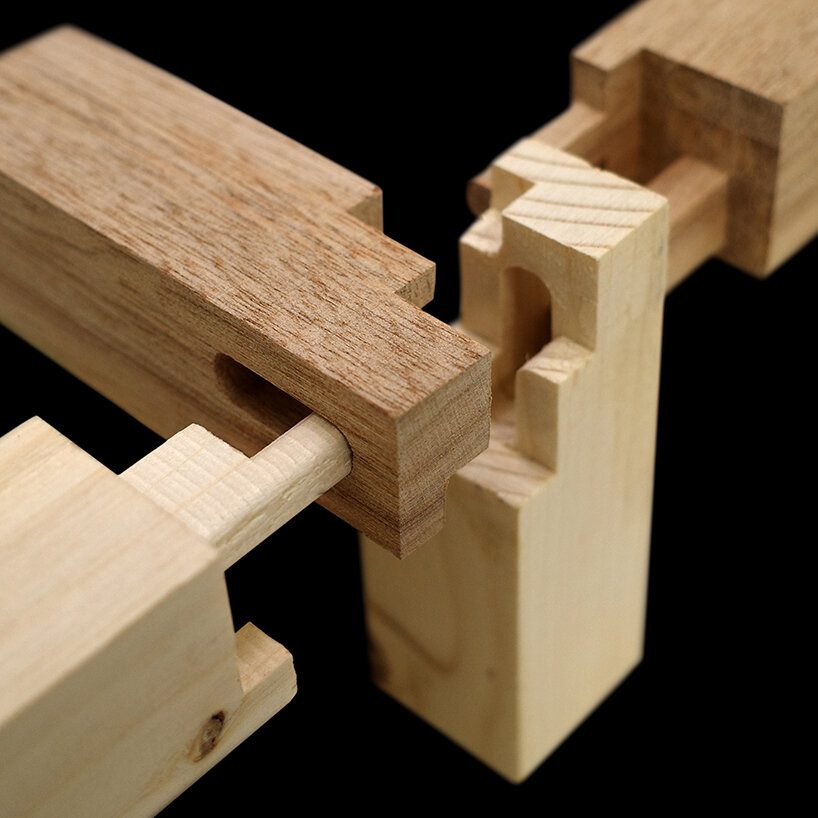
Vairocana (Cosmic Buddha)
Variocana is a supreme Dharmakaya Buddha in Mahayana and Vajrayana Buddhism, representing ultimate reality, universal enlightenment, and the source of all phenomena
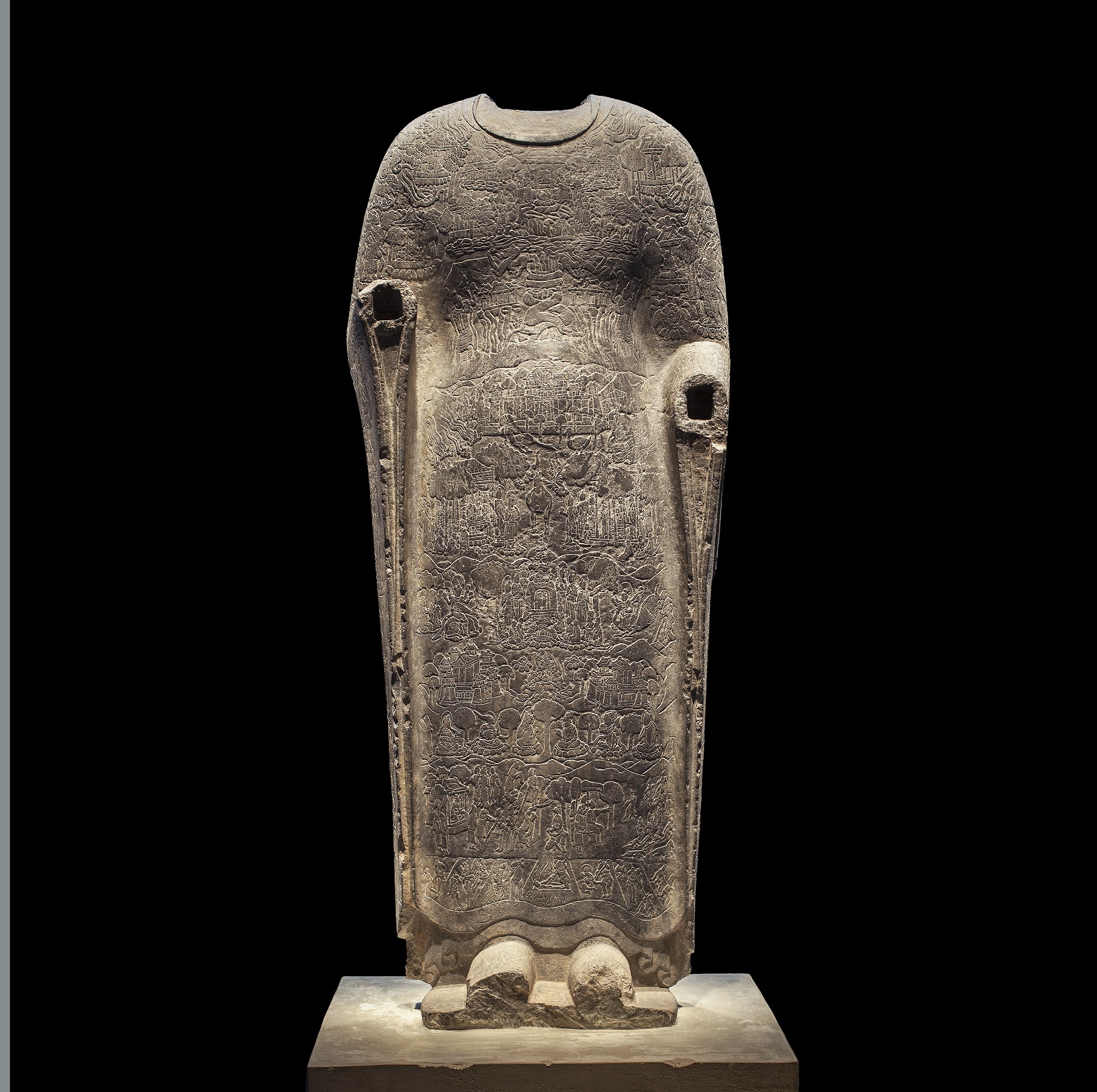
Heian period
The last division of classical Japanese history, running from 794 to 1185
Heian Capital (Kyoto)
Heian-kyō (平安京; lit. "peaceful/tranquil capital") was one of several former names for the city now known as Kyoto. It was the official capital of Japan for over one thousand years, from 794 to 1868 with an interruption in 1180.
Hall of State (Shishinden)
The Shishinden Hall was a main hall where ceremonies like the Emperor's genpuku (attaining manhood), investiture of the Crown Prince, and Sechi-e (seasonal court banquets) were held, in the Imperial Palace which was the Emperor's private place.
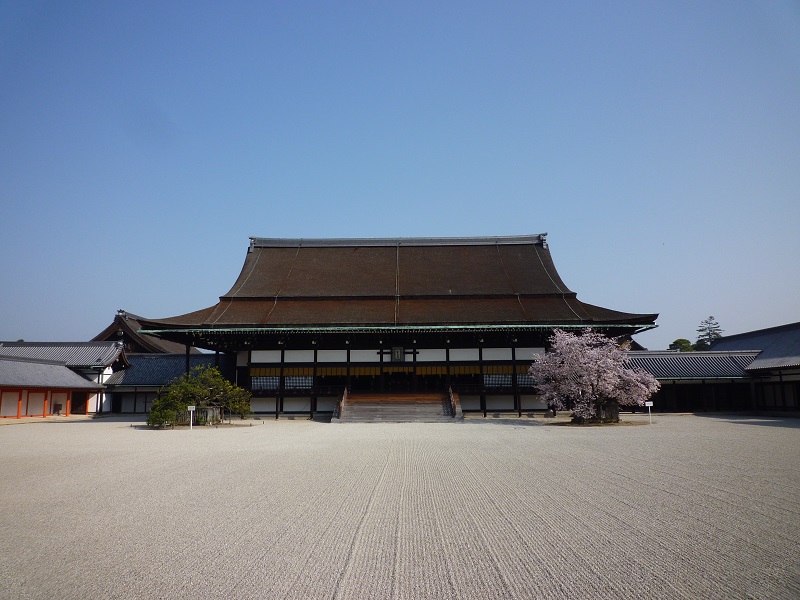
Emperor's Living Quarters (Seiryōden)
The Seiryōden (Seiryo-den) was the Emperor's daily living quarters in the Heian Palace and later the Kyoto Imperial Palace
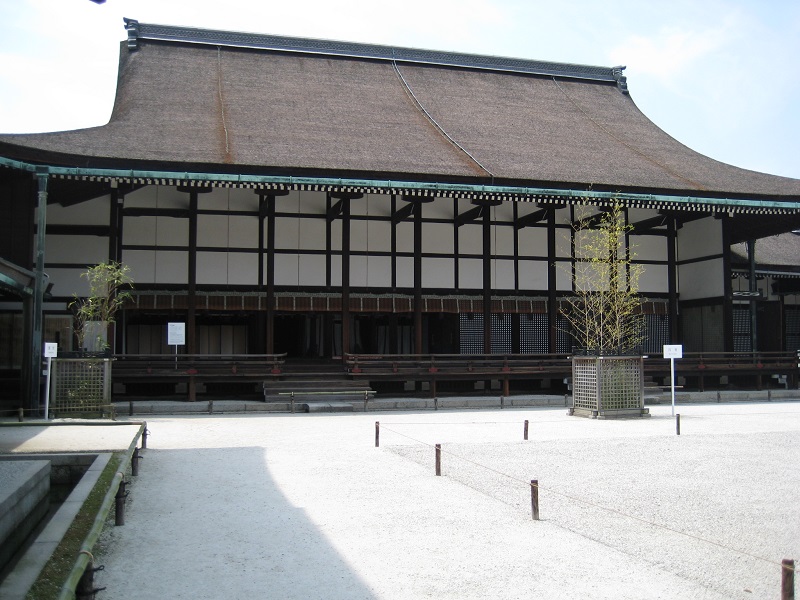
The Tale of Genji (Genji monogatari 源氏物語)
Novel
• Murasaki Shikibu
• Early 11th c. (1000–1008?)
• 54 chapters
• No original text
• Prince Genji
• Romance
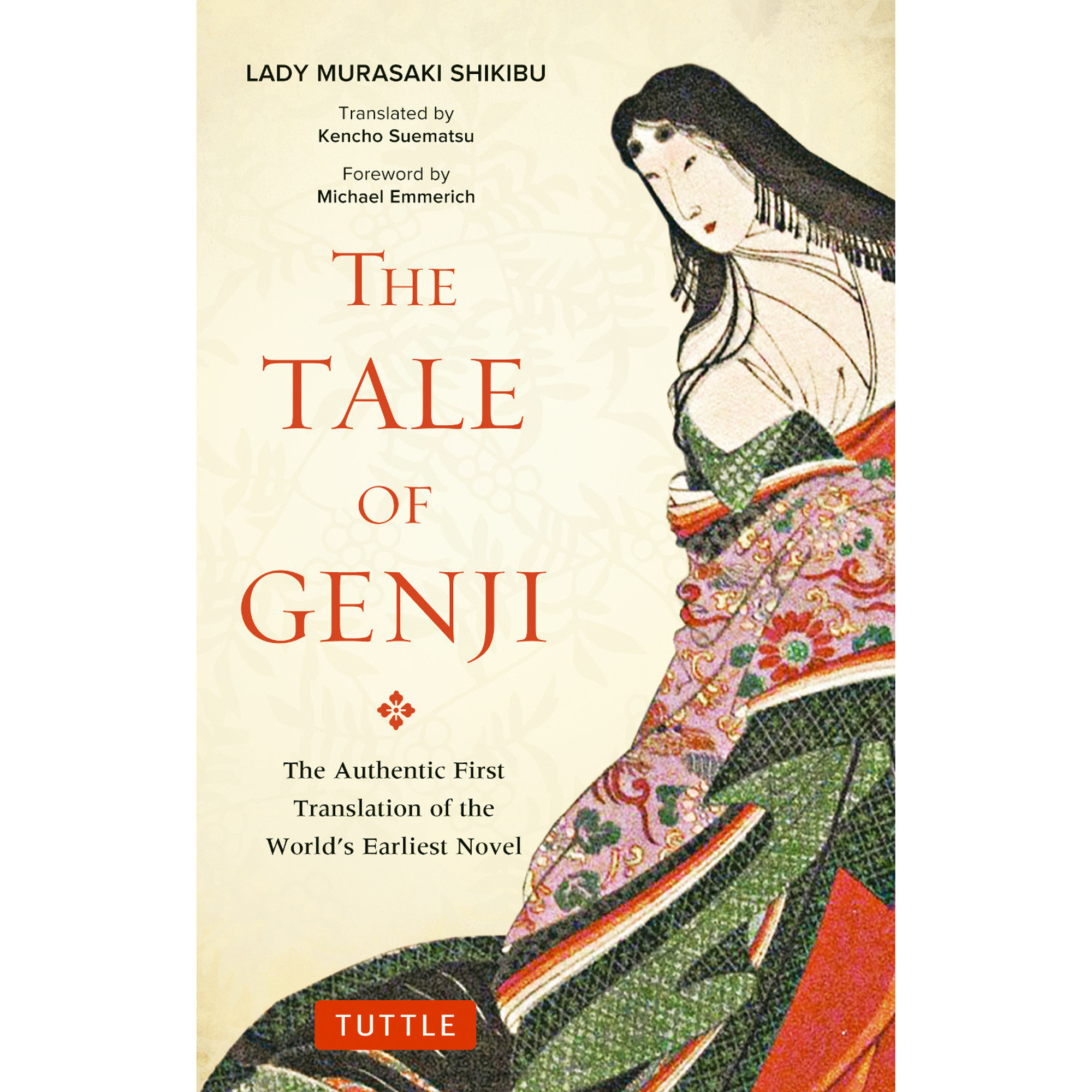
Murasaki Shikibu 紫式部
• A tutor of the princess of the Fujiwara clan
• Fujiwara no Michinaga
• A lady-in-waiting in the imperial court
llustrated Handscroll of the Tale of Genji
• 12th c.
• Produced by 5 teams of court members
• Commissioned probably by Retired Emperor and his wife
• 10–12 volumes (scrolls)
• Only fragments containing 20 pictures survive
Scroll of Frolicking Animals
• Chōjū giga 鳥獣戯画 (lit. Caricatures of Animals)
• Handscroll (4 scrolls today)
• Late 12th c
• No accompanying text
• Often described as the 1st manga
Hungry Ghost Scrolls
This narrative scroll depicts the Realm of the Hungry Ghosts (gaki), one of the Six Realms of Transmigration (rokudō) in Buddhist thought.
Hell Scrolls
Hell Scroll is a scroll depicting seven out of the sixteen lesser hells presented in Kisekyō. Six of the paintings are accompanied by text, which all begin with the phrase "There is yet another hell", following a description of what the sinners depicted did to end up in this particular hell.
Pure Land Buddhism
The Pure Land tradition is primarily focused on achieving rebirth in a Buddha's "pure land", a superior place to spiritually train for full Buddhahood, where one can meet a Buddha face to face and study under them without any of the distractions or fears of our world
Amida Buddha
Amida Buddha, also known as Amitābha, is a Buddha of Infinite Light and Infinite Life central to Pure Land Buddhism in East Asia
Western Pure Land
Sukhavati is also called the Land of Bliss or Western Pure Land and is the most well-known of the Mahayana Buddhist pure lands due to the popularity of Pure Land Buddhism in East Asia.
Murdra
It is a sacred, symbolic, or ritual gesture, most often performed with the hands and fingers, used in Hindu, Buddhist, and Jain traditions, and in yoga and meditation practices. Mudras are believed to influence the flow of vital energy (prana) and connect the brain to the body, helping to affect mood, soothe pain, increase vitality, and deepen spiritual practice.
Byōdōin
Byōdō-in (平等院, "Temple of Equality") is a Buddhist temple in the city of Uji in Kyoto Prefecture, Japan, built in the late Heian period.
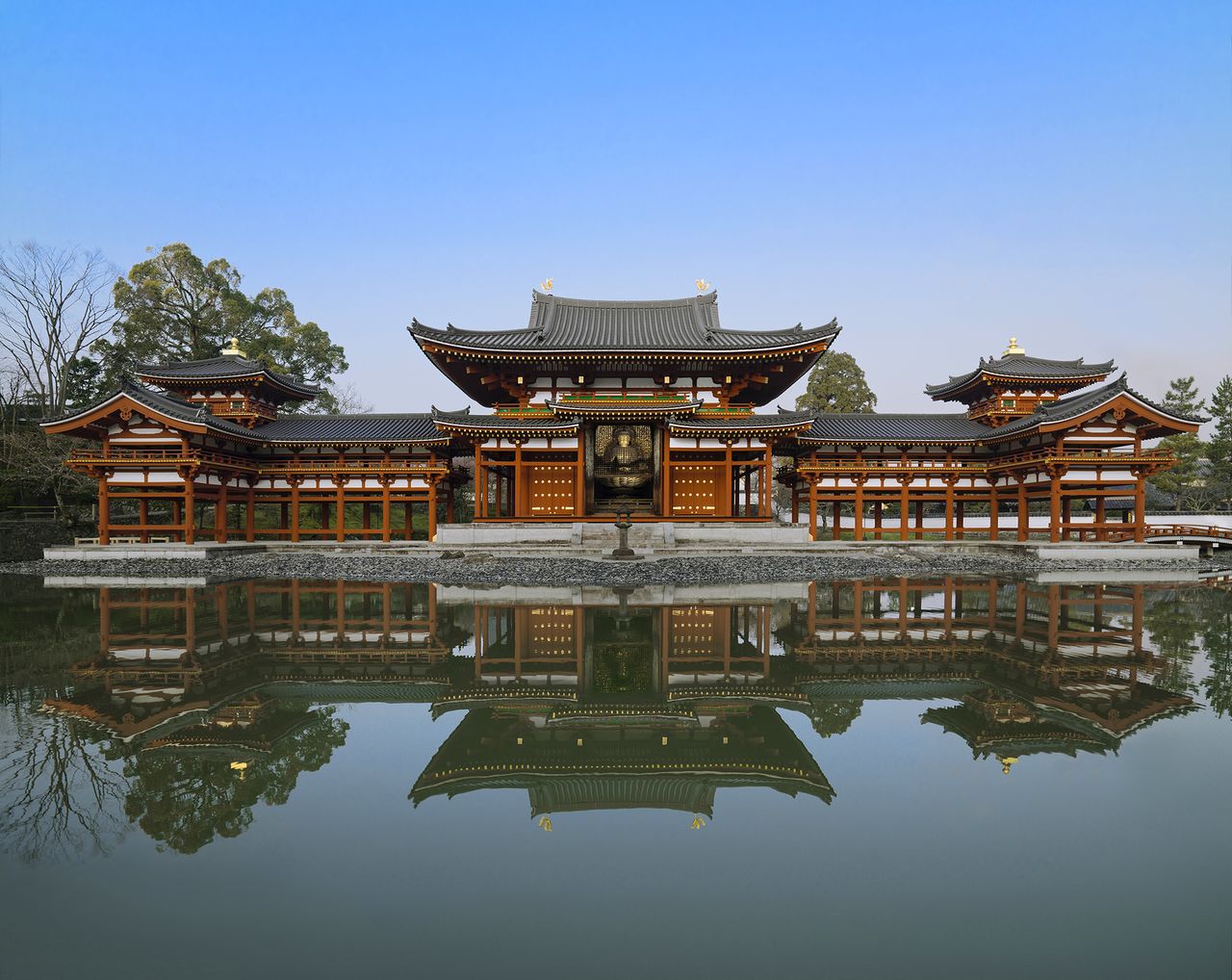
Phoenix Hall (Hōōdō)
In the following year, Amida-do Hall (Phoenix Hall) was completed in the interior of Byōdōin, and in there sits the 2.4 meters tall Amida Buddha statue created by Jōchō, who is claimed to have been the best Buddhist sculptor in the Heian Period.
Fujiwara no Yorimichi
Fujiwara no Yorimichi was a Japanese court noble. He succeeded his father Michinaga to the position of Sesshō in 1017, and then went on to become Kampaku from 1020 until 1068.